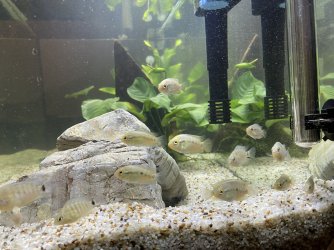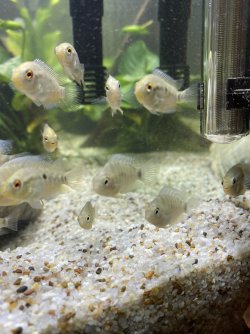What species of rainbowfish did you get?
You can keep around 12 adult rainbowfish that grow to about 4 inches long in a 3 foot tank.
Rainbowfish need plant matter in their diet and suffer health issues if they don't get plant matter in their diet. At least half their diet should be plant based and you can use vege flakes, spirulina flakes, goldfish food, and aquarium plants. You can also offer them cooked pumpkin, zucchini, cucumber, etc.
Duckweed is a small floating plant and most of the bigger rainbowfish will eat that.
Have lots of live plants along the back and sides of the tank but leave the middle open for them to swim and show of fin.
Have the lights on for up to 16 hours a day and let algae grow on the back glass and ornaments. The fish will pick at that if there is no other plant matter.
You can put some smooth rocks n a bucket of water outside in the sun and let them get covered in algae. Then put the rocks in the tank and let the fish eat the algae. Then put the rocks back out in the bucket to grow more algae. If you have a few rocks you can put one in the tank while the other grows algae, then swap them over.
------------------
Keep the feeding down to 2-3 times week until the filter has cycled.
Do a 75% water change and gravel clean the substrate any day you have an ammonia or nitrite reading above 0ppm, or a nitrate reading above 20ppm.
Have coverglass on the tank to stop the fish jumping out.
Rainbowfish show better colours when they have a dark substrate, dark background and floating plants.
The following link has all the known rainbowfish from Australia and New Guinea. It might interest you.
A website dedicated to Rainbowfishes of Australia and New Guinea

rainbowfish.angfaqld.org.au




